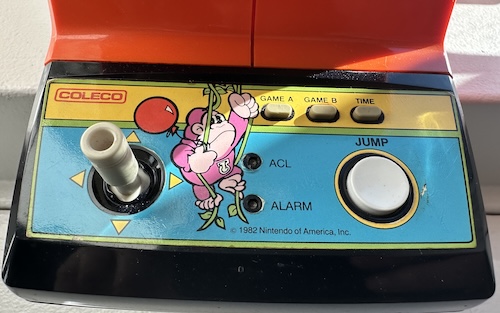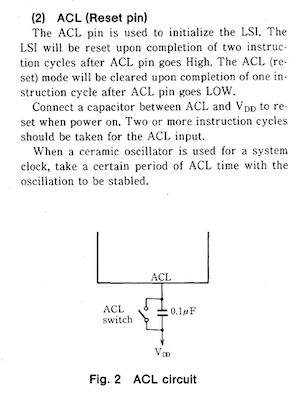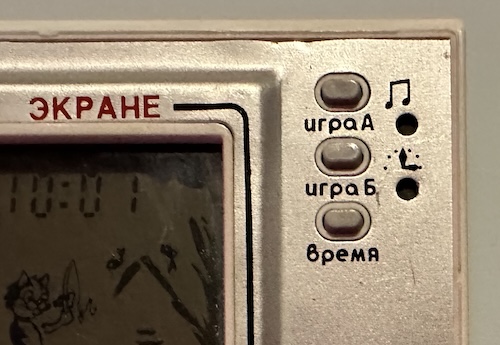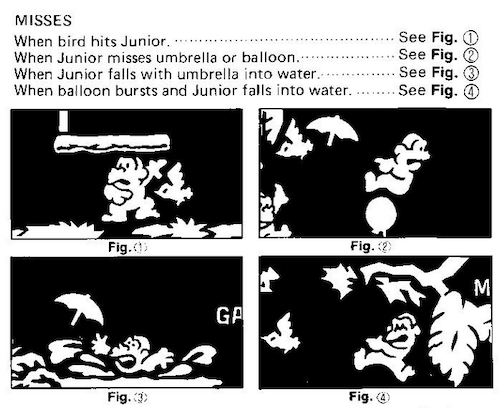

Once I wrote a blog essay titled Seven, Ace, Queen, Two, Eight, Three, Jack, Four, Nine, Five, King, Six, Ten. It was about a “magic” card trick. Magic trick. Take a deck of cards face down. Move the top card to the bottom, then deal the new top card face-up on the table. Repeat this process until all the cards are dealt. And — abracadabra — the cards come out in perfect order!
If you want to perform this trick with one suit, the title of that earlier post tells you exactly how to stack your deck.
In the fall of 2023, I gave this trick as a homework problem to my STEP students. The result? We ended up writing a 40-page paper, Card Dealing Math, now available on the arXiv. At one point, we seriously considered calling it The Art of the Deal, but decided against it.
In the homework version, the deck consisted of cards from a single suit, but we generalized it to a deck of N cards labeled 1 through N. The dealing process we studied is called under–down dealing: you alternate between placing one card under the deck and then dealing the next one face-up. It’s very similar to down–under dealing, where you start by dealing the first card instead. These two patterns are often, unsurprisingly, called the Australian dealings.
The under-down dealing turns out to be mathematically equivalent to the Josephus problem. In that famous ancient problem, people are arranged in a circle, and you repeatedly skip one person and execute the next (much grimmer than playing with cards). The classic question asks: given N people, who survives? In our card context, this corresponds to asking where the card labeled N ends up in the prepared deck.
More generally, the Josephus problem can ask the following question. If we number the people in a circle 1 through N, in what order are they eliminated? In our research, we flipped the question around: how should we number the people in the circle so that they’re eliminated in increasing order?
Naturally, we couldn’t stop there. We explored several other dealing patterns, discovered delightful mathematical properties, and along the way added 44 new sequences to the OEIS. The funnest part? We also invented a few brand-new card tricks.
Share:
What was home video gaming like in the early 1980’s? You might consider picturing things like the Atari 2600 or the Intellivision, and those were certainly a big part of it. But another big part were the category I’ll call segmented-display games; portable systems like the Game & Watch, but also more stationary “portable arcade” machines. And in the United States, no name in home mini-arcades was bigger than that of the Connecticut Leather Company, or if you’re a friend, Coleco.
Not made of leather

The Coleco Mini-Arcade line were a big deal. In 1982, Electronic Games magazine reported that Coleco was reporting initial advance sales orders of over 4 million for the first four games in its series alone, with 1.5 million units of Pac-Man sold already. Note that at the time of this article two of those four games weren’t even out yet, and even more were added later on. Four million units is more than consoles like the ColecoVision or the Sega SG-1000, nothing to sneeze at.

The technology most of these used were vacuum flourescent displays. These are pretty nice-looking and give off their own light, but beyond that are segmented displays similar to LCD watches (or Game & Watches, spoiler) of the same time period. You might be more familiar with them on stereo equipment, like my 1986 Technics SL-PJ33 CD player.

By the way, did you know many of these are in MAME now? Here’s Donkey Kong. It even includes a form of the rivet stage; is it really a worse way to play Donkey Kong than, say, the Atari 2600 version? And at the time of this writing, segmented display versions of Pac-Man like that 1.5 million-seller are still available today for next-day delivery on monopolistic internet marketplaces. (Not an affiliate link, so go use someone else’s and give them money) Evidently, this is “CLASSIC PAC-MAN AT IT’S BEST”.
So I decided I had to get one of these Colecos.
Donkey Kong Jr.
I decided to go for Donkey Kong Jr., also known as Donkey Kong Junior. After all, my Donkey Kong Jr. arcade PCB is still converted to instead play Hero in the Castle of Doom.

And I have to say I love the look of the Donkey Kong Junior tabletop here. With the pastel aesthetic and its large size, it really stands out on a shelf. Not to imply all the stuff I buy just sits on shelves. I play games a lot, really!

The aesthetic continues on the front. I think the looks were a big part of the appeal of the Coleco tabletops; it’s a substantial-looking machine with arcade-like decorations. Sure, you’re playing a game on a segmented display of the sort used mostly for basic seven-segments numerics, but the experience is everything around it, with the joystick, the large jump button, and yes, the cabinet art.
So why don’t we turn on the game? Well, you see, the game is already on. I’ve fallen for a trick again; unlike Coleco’s Donkey Kong, Pac-Man, or any of the others, this isn’t a VFD display at all! Indeed, it’s lit by a translucent panel on the back of the machine; you need to have some sort of light source hitting it.

And that might sound familiar. Like something else we’ve seen on this blog before; something else that can also play some kind of game called Donkey Kong Jr.– the Game & Watch Panorama Series.
Coleco turned to Nintendo themselves to make this machine. It’s differently shaped than the other Coleco home arcades and not VFD because it’s just a rebadged and recolored version of Nintendo’s Game & Watch Tabletop game Donkey Kong Jr. (If you want to play it for yourself, there’s a pretty decent recreation on Itch.)
And that’s not a bad thing!
As I noted on the Panorama Screen article, this is actually one of the best-looking games out there. And the Tabletop form factor makes it look even better; let’s put this behind some sunlight.

That might be a little too much color. But it shows the point– this isn’t the crude shapes of the VFD games; this is a full-color art. It also shows that the game here is the same as the panorama screen. Look at my previous article for more details, Nintendo made no less than three LCD games out of Donkey Kong Jr., and this one reflects some of the gameplay elements of stage 2 of the arcade, adapted for a horizontal screen.

The tabletop form factor also lets us get a really good view of the colorization sheet mounted at an angle.

By the way, take a closer look at the control panel.

Why is that one button labeled ‘ACL’? The manual notes that it’s the button used to reset the time, and will also reset your high scores, but doesn’t say more than that, like why it’s called that.
Well, the Game & Watch titles, tabletop and panorama included, used a Sharp 4-bit microprocessor. Let’s take a look at the manual to see if it can find any clues. It turns out it’s “Auto CLear”, and we even see a possible circuit for using it to reset.

This gives some clues to how the program works; it boots up in time-setting mode. As a Game & Watch, it never turns off; the high score is only remembered because the low-power microprocessor keeps its RAM always charged. 128 4-bit words of RAM (64 bytes), even. The only way left to change that is to reset it, which also causes it to initialize the RAM again.
You might wonder now about the Soviet Game & Watch I covered a few years ago. While Egg/Mickey Mouse, part of the Wide Screen series, did have buttons labeled “ALARM” and “ACL” just like Donkey Kong Junior here, the Soviet clone used icons instead. A notable improvement, I’d say.

But… why?
There is something interesting here. The Coleco Tabletop arcades, as I noted, were quite successful for their time. But the Game & Watch Tabletops, on the other hand, were flops– the Panorama Screen was introduced to try to give the line some surviving form. I can’t find any precise sales numbers, but judging by eBay sales, I wouldn’t be surprised if the Coleco version of Donkey Kong Junior substantially outsold its Nintendo-branded version.

So why might that be? Well, there’s a few things to keep in mind here. The first was that Coleco in the early 1980’s was a titan of the toy industry, with a huge marketing budget. What else were they putting out in 1982? A little line of dolls called Cabbage Patch Kids. This was a company at their peak. (Which certainly wouldn’t burn itself out in just a few years!) Meanwhile, Nintendo, despite its various dalliances, was much smaller in the toy business, especially outside of Japan.

Secondly, I think how these were marketed played a big role. Coleco aggressively marketed its tabletop machines with one goal in mind: this was how you could play the big-name arcade video games in your home. The game titles were licensed big names like Donkey Kong, Pac-Man, Ms. Pac-Man, Frogger, and Galaxian, and the VFD games attempted to simulate those, with surprisingly decent success considering.

Nintendo, meanwhile, treated tabletops as a larger version of their portable on-the-go line, relying on non-video game licenses like Snoopy and Popeye. Donkey Kong Jr. was the most arcade-like of the bunch (and diverged from its source material significantly); Mario’s Cement Factory didn’t share gameplay with any other game with Mario. These failed to capture the arcade-at-home market Coleco targeted, and were too bulky to hit the gaming-on-the-go sweet spot of other Game & Watch titles. (Panorama fixed that, which is probably why that line lasted longer)
Really, though, we all know it’s because Nintendo didn’t include that beautiful pastel side art.

While we use a lot of CAD tools, many of us are fans of Tinkercad — especially for working with kids or just doing something quick. But many people dislike having to work across the Internet with their work stored on someone’s servers. We get it. So does [CommonWealthRobotics], which offers CaDoodle. It is nearly a total clone of Tinkercad but runs on Windows, Linux, Mac, or even Chrome OS.
Is it exactly Tinkercad? No, but that’s not always a bad thing. For example, CaDoodle can work with Blender, FreeCAD, OpenSCAD, and more. However, on the business end, it sure looks like the core functions of Tinkercad.
The program appears fairly new, so you have to make some allowances. For example, the Linux AppImage seems to have difficulty loading plugins (which it needs to import many of its file formats). In addition, on at least some systems, you have to resize the window after it starts, or it won’t respond. But, overall, it is pretty impressive. The Settings, by the way, has a checkbox for advanced features, and there are some other goodies there, too.
One reason we found this interesting is that we sometimes go into schools, and they don’t want us to have kids on the Internet. Of course, they don’t like us installing random software either, so you can pick your battles.
Tinkercad, of course, continues to add features. Not all of which you’d expect in a drawing package.
I recently realized that it has been a year since I started writing regularly on Substack (can I now officially call myself a “Substacker”?), and one of the unexpected joys of sitting down week after week to write these articles is the insight it’s given me on how important editing can be.
I make no claim to be a great prose stylist. I claim only that the versions of the article I hit “send” on are much better than their first drafts.
Learning to write well for the internet has been a long process, though, and I’m nowhere near the end of it. But I’d never have got this far without an amazing editor. Through our work together, I’ve learned how even seemingly small changes to the prose can make accessible topics out of things which many would consider too dry or difficult for a general audience.
When the sentences flow smoothly, the reader’s attention flows along with them. When the prose stumbles, the reader stumbles too.
So I’ve become a little bit obsessed with the kinds of changes that have come out of the editing process. And I noticed that the changes I would make were most often at the ends of sentences or clauses. I found that a clumsy sentence could often be made much more graceful by changing nothing but the phrase at the finish.
But for a long time, I had no real theory about what I was changing or why.
This bothered me for a while — I like my theories, after all — until, some weeks later, with my mind steeped in theories of poetic rhythm, I realized that my editor and I had been doing by instinct something that has thousands of years of theory behind it. But it’s largely disappeared from the discussions we have about writing style today.
I’m talking about the study of prose rhythm, and more particularly, theories of cadence: the rhythm of the end of sentences (and other things which we’ll talk about soon).
Writers have cared about “sticking the landing” — that is, ending sentences on a satisfying rhythm — since the days of orators of Ancient Greece.1 They had very clear ideas about which rhythms worked at the end of sentences and which ones didn’t, as did the ancient Romans and the medieval churchmen. But none of them wrote in English.
So I set out to see if anyone had examined how these ancient and medieval theories of prose rhythm might apply to English. This article is the result of my investigations.
One caveat before we begin: I want to emphasize that I have found no recipe for good prose, no step-by-step list to follow that will guarantee a good result. But what I have found is a way of analysing and classifying some of the rhythmic ingredients of English prose, to give you a better idea of what exactly — to continue the metaphor — you’re cooking with.
You’re reading The Dead Language Society. I’m Colin Gorrie, linguist, ancient language teacher, and your guide through the history of the English language and its relatives.
Subscribe for a free issue every Wednesday, or upgrade to support my mission of bringing historical linguistics out of the ivory tower and receive two extra Saturday deep-dives per month.
If you upgrade, you’ll be able to join our ongoing Beowulf Book Club. You can also catch up by watching our discussion of the first 1962 lines (part 1, part 2, part 3, part 4) right away.
This too starts in ancient Greece
It seems to have been en vogue in the Edwardian period (1900–1919) for scholars to examine the rhythm of English prose.
They were drawing from recent studies that had elucidated first the rhythmic tools used by classical orators such as Cicero, and the subsequent development of those tools into the Latin of the Middle Ages.
To understand how all this applies to English, however, we’ll need to acquaint ourselves with some of the terminology that originally applied to the study of prose rhythm in Latin and Ancient Greek.
Today, we divide prose into paragraphs, sentences, and clauses. We mark these divisions typographically: paragraphs are signalled to us through the use of indentation and spacing, sentences by capitalization at the beginning and the use of the period or full stop (.) at the end, and clauses by the use of punctuation like semicolons (;), and colons (:) at the end, although not entirely consistently.
The ancients understood prose divisions differently. Their definitions were based on oratorical practice, that is, the art of public speaking. What these ancient concepts of prose organization care about is rhythm. And rhythm is determined by how the words hang together into larger units, and where it’s appropriate to take a breath.
Their largest division in this ancient system did not correspond to our modern paragraph,2 but to our modern sentence. They called this division a period, from the Greek περίὁδος períhodos ‘cycle.’
The period was a unit of organization which could stand on its own, just as we understand the modern sentence today. Those of us who call the punctuation at the end of a sentence a period have taken the name from the chunk of language that the punctuation mark concludes.
The period was composed of smaller units called cola (singular, colon). The word colon comes from the Greek κῶλον ‘limb’.3 A colon was a unit of prose which could be pronounced in a single breath, after which there would be a pause.
As we can tell from the etymology of the word, a colon was not a complete thought: it was considered as a part of the whole, like a limb of a body, where the body corresponds to the period.
We might think of the colon as equivalent to the modern concept of a clause, although the comparison is not exact. The clause is fundamentally a grammatical concept: a unit consisting of a subject and a predicate. The colon, on the other hand, is defined in terms of when a speaker would have to take a breath.
Like the period, the colon has given its name to a unit of punctuation, although the modern function of the punctuation mark we call a colon (:) is not simply to mark the end of a colon in the rhetorical sense.
Cola, too, were divided into smaller units. Each of these was called a comma (plural, commata), from the Greek κόμμα kómma ‘piece.’ The comma corresponds roughly to the modern concept of a phrase, that is, a group of words that act together as a single unit.
For example, a big matzoh ball is a noun phrase, really very nice and good is an adjective phrase, and put an end to maritime oil spills is a verb phrase.
Phrases in the modern sense can nest: maritime oil spills is a noun phrase which exists inside another noun phrase, an end to maritime oil spills, which is itself a part of the larger verb phrase put an end to maritime oil spills.
The classical comma doesn’t worry about nesting in this way, since it has its origin in oratory: for an orator, the relevant thing is not the grammatical structure of the phrase, which is indeed hierarchical, but rather its rhythmic structure.
In other words: where are the places where a small pause could be inserted to let the speaker take a breath? These are the comma divisions. And, as you’ve no doubt noticed by now, the ancient rhetorical comma has given a name to a modern punctuation mark (,), which is used in some places to mark pauses in speech, and in others to mark particular grammatical relationships.
Why no one knows how to use commas today
I’ll pause here to note that modern punctuation has a dual heritage: on the one hand, it descends from marks used to indicate the rhythm of the sentence, and therefore what kind of breath a speaker should take at various points; on the other, it seeks to express grammatical relationships.
Modern punctuation standards are a sometimes uncomfortable blend of both systems. For example, in the sentence, I had a good time and she did too, the use of punctuation to mark grammatical relationships forbids a comma (that is, the punctuation mark) between these two conjoined clauses, but the use of punctuation to signal rhythm and breathing points seems to tempt us to add a comma after time, which many writers do indeed do.
As we’ve seen, the way the ancients divided prose had much more to do with rhythm than with grammatical relationships. And this was not just a characteristic of oratory, which would be primarily delivered verbally, but also of writing. There was no great difference between the two modes of delivering prose in how the ancients thought of them: a letter or a work of historical narrative was divided into periods, cola, and commata just as a speech was.
For our purposes, these divisions were of special importance because of another feature of ancient rhetoric: writers and speakers paid special attention to the rhythm at the end of each period, and often of each colon as well. Each period was thought of as akin to a flight, rising at the beginning and falling at the end, and, as I’m sure you’ll all agree, the most important part of any flight is an orderly and controlled landing.
So in classical Greek and Roman practice, it was considered a matter of good style to end a period in one of only a few rhythmic patterns. These patterns were called by the Romans clausulae, but I’ll use the later term cadence to describe them, because our primary interest is English, where the term used for these period-ending patterns is cadence rather than clausula.
And, as it turns out, these cadences were crucial for understanding not just the style of the ancient Greeks and Romans, but of many of the great English writers as well, even if these writers were wholly unconscious of this system of rhythmic cadences.
“Shave and a haircut” is a classical cadence
But before we talk about individual English writers, we need to understand which cadences were considered appropriate for ending a period, and which were not.
The first thing to know is that the ancient Greeks and Romans defined rhythmic patterns in prose in the same way they did in poetry: in terms of long and short syllables.
These patterns of long and short syllables grew out of the nature of the Ancient Greek and Latin languages, which distinguished between long and short vowels (much like Old and Middle English did).
For someone who hasn’t studied Ancient Greek or Latin, these patterns of long and short syllables can be obscure. Fortunately, we can avoid talking about them because the Romans themselves eventually switched to a different way of determining rhythm.
That is, they started to use the stress pattern of the words to determine the rhythm, just like we do in English today — by the way, if you’re not familiar with the concept of stress and rhythm in English, you can brush up on that here. It’ll come in handy as we proceed.
Let’s look at some examples of what the late Romans — and their medieval descendants4 — considered acceptable cadences.
There were three main cadences considered acceptable, and each had a name: there was the cursus planus ‘level cadence,’ the cursus tardus ‘slow cadence,’ and the cursus velox ‘fast cadence.’ Each of these referred to a different arrangement of stressed and unstressed syllables, which I’ll notate with the symbols / for stressed and x for unstressed, respectively.5
Cursus planus: / x x / x, e.g. Latin vóces testántur ‘voices bear witness’
Cursus tardus: / x x / x x, e.g. Latin méa curátio ‘my guardianship’
Cursus velox: / x x / x / x, e.g. Latin gáudia pèrveníre ‘to arrive (at) the joys’6
If you don’t know Latin, listen to the rhythm of the stress as I read them here — note that I’m reading them in a reconstructed classical pronunciation, which is not how the medieval church would have read them. But what matters here is not the precise details of the vowels and the consonants, but the pattern of the stress accent, which is the same in all pronunciation schemes:
Along with these three basic cadences, there were some acceptable variations, but we’ll discuss these later on.
The use of these cadences in writing rhythmic Latin prose continued through the latter half of the Middle Ages, until the rediscovery of classical learning in the Renaissance — including the practice of basing rhythm on long and short syllables rather than the stress accent — brought an end to the practice.
But, for a long time, scholars have wondered whether the practice truly died out everywhere. In particular, many writers have wondered whether the system survived in the writing of English prose, even if the influence was unconscious. After all, English is a language which, like Medieval Latin, uses a stress-based system of accent.
One of the first places they looked for this influence is in the Book of Common Prayer, first published in 1549 as a product of the English Reformation. New versions followed in 1552, 1559, and 1604, amid (and as a result of) the religious and political turmoil of that period in English history, before it finally stabilized in the 1662 edition.
The language of the Book of Common Prayer is worth an issue unto itself, because it’s been one of the most influential works on English prose style, with a level of influence similar to the Authorized (i.e., King James) Version of the Bible.
But for now, I’ll just say that a set of prayers7 from the Book of Common Prayer was used as the data set for a 1912 paper by John Shelly, which examined the influence of the Latin cadences on English prose. These prayers had been translated into English from Latin by Thomas Cranmer, although Cranmer made many adaptations to fit his own ideas about the Church.
Shelly’s contention was that Cranmer was replicating in his translations the cadences that he found in the original Latin — Latin that worked according to the three cursus patterns of the Middle Ages.
Corresponding to the Latin cursus planus vóces testántur, we have the English hélp and defénd us. The Latin cursus tardus méa curátio is echoed by the English góverned and sánctified, and the cursus velox of Latin gáudia pèrveníre corresponds to the English púnished for òur offénces.
In Shelly’s analysis, around 50% of the English prayers in the data set ended in one of these three cadences. Other scholars, including Albert C. Clark and Oliver Elton, expanded the investigation to encompass English prose more generally, and extended the analysis to include the following variations of the three classical cadences:
variant cursus planus: / x x x / x, e.g. Latin dóna sentiámus ‘may we experience the gifts,’ English wrítten for our léarning
variant cursus tardus: / x x x / x x, e.g. Latin (vir)tútis operátio ‘the working of power,’ English dángers and advérsities
trispondaic (extended cursus velox): / x x / x / x / x, e.g. Latin (er)rántium córda rèsipíscant ‘may the hearts of the erring repent,’ English páss to our jóyful rèsurréction.
These scholars found that these classical cadences do indeed appear — and in great number — in some of the most classically influenced English authors: Edward Gibbon (1737–1794), the author of The Decline and Fall of the Roman Empire, comes to mind as an especially good example of such an author, as do Thomas Browne (1605–1682), author of Urn Burial, and Thomas Babington Macaulay (1800–1859), author of The History of England.8
Classical cadences in the hands of a master
Let’s look now at how Gibbon, to take the best-known of these authors as an example, manages his cadences to see how many of them are in accordance with the classical forms.
I’ve broken up the first paragraph of The Decline and Fall of the Roman Empire according to cola, and marked the stress pattern of the cadences, as I understand them:9

In the decade since the neural architecture version of Google Translate and the invention of transformer architecture for neural networks, we have experienced the most rapid technological breakthroughs since at least World War II, and possibly ever. Artificial intelligence has proven to be a satisfactory substitute for the labor of translators and illustrators and looks to soon be an adequate substitute for call-center workers, computer programmers, paralegals, reference librarians, and radiologists. The best within all these professions can still exceed artificial intelligence, and indeed may find it a complement rather than a substitute for their labor, but the typical member of such occupations should expect artificial intelligence to behave as competition. As capital continues to invest enormous sums in training artificial intelligence, it will provide a usually adequate and often superior substitute for the human capital of more and more workers.
That improving AI is a substitute for labor is widely appreciated, and indeed, megalomaniacal mad-scientist visions of mass white-collar unemployment is part of the pitch decks shown to investors. What is less widely appreciated is that even if the technology stopped improving tomorrow, it would still be an increasingly good substitute for human capital. This is because it is already capable of giving human beings, and especially young people, the choice to idle in stupidity and ignorance.
People use consumer-facing artificial intelligence for all sorts of things. Every few days one learns about some horrific application like communing with the dead, cultivating psychosis, or substituting sycophantic waifubots and simpchats for the frustrations of romance with human beings. But the real killer app for LLMs is cheating on homework.
A graph of OpenRouter data that went viral this August shows that tokens processed by OpenAI dropped precipitously with the end of the school year. I checked the current data on the OpenRouter dashboard and tokens skyrocketed again with the beginning of this school year. OpenAI’s own analysis does not break out queries by date, but it shows that 40 percent of all queries are for what the researchers call “doing” tasks. These tasks are what would traditionally be considered work, mostly writing or editing prose and summarizing or translating texts.
“The user interface asks what dost thou want?”
Like a Great Oxygenation Event for the intellect, the first application of a technology that mirrors human intelligence is to undermine the cultivation of the real thing. John Henry beat the steam-powered drill, albeit at the expense of a heart attack, but the machine would have won by forfeit if years earlier it had done John Henry’s labor and exercise for him and so he never developed the strapping physique necessary to be a steel-driving man in the first place. And the temptation is ever present. Google Docs, Microsoft Outlook, Microsoft Word, and many other apps or browser windows into which one regularly types more than a hundred characters of text have user interface features that let AI do the writing. At every turn, the baby god actively solicits opportunities to do your work for you, no matter how important it is for developing your capacities or maintaining your integrity. The user interface asks what dost thou want? Wouldst thou like thine term paper done? A bit of homework? Wouldst thou like to live LLMiciously?
In my conversations with deans responsible for academic discipline, they have told me they enjoyed only a brief return to normal case loads after clearing the backlog of misconduct cases from Covid-era remote instruction before reaching a new normal of nonstop misconduct cases related to LLM usage. The problem is difficult because whereas cloud services like TurnItIn make it relatively trivial to detect and conclusively establish traditional ctrl-C/ctrl-V plagiarism, one can usually only strongly suspect but not conclusively prove unauthorized LLM usage. TurnItIn has created an AI detector, but many universities decline to use it as it has a low but nontrivial false positive rate: If the true rate of misconduct is 5 percent and the AI detector has a false positive rate of 5 percent and false negative rate of 5 percent, then half of all cases flagged by the AI detector will be innocent.
The obvious solution is to base grades on in-class assignments, but this has both intellectual and practical problems. The intellectual problem is that we sometimes want sustained engagement with a project, as with a term paper. The practical problem is that the marginal demand for education is in online education, where it is impossible to proctor to the same level that one can with blue books in a lecture hall.
One sometimes hears that instead of waging the impossible fight of getting kids not to use AI, we should teach them how to use it. There is a logic to this. When a technology becomes more available, wages go up for those who have human capital that complements the technology. But this raises the question of what sort of human capital is a complement to—as opposed to a substitute for—artificial intelligence and the corollary of whether such human capital is best cultivated through use of artificial intelligence or abstention from it? The usual assumption is that the most valuable skill one can acquire is prompt engineering. This is indeed an important skill to have, but I am skeptical that one learns to interact well with an AI through off-loading reading and writing tasks to it during one’s education.
My experience when I have caught university students making unauthorized use of AI is that the cheaters are too ignorant and lazy to know what good output would look like. Sometimes these errors are very obvious, as when two of my students turned in memos that did not summarize the assigned reading but one with a similar title. Knowing what good output looks like requires skills and knowledge that can only be acquired the old-fashioned way, by doing one’s own work. And I am talking about students at a selective university a few years into the AI boom. How much worse must it be at a junior high chosen at random? And how much worse will it be when students who used AI for their entire time in junior high and high school age into first college and then the labor force?
Personally, I find that judicious and careful use of AI helps me at work, but that is because I completed my education decades ago and have been actively studying ever since. Thirty years in higher education gives me the skills to complement an LLM rather than have it substitute for my own. Decades of doing so without an LLM as a substitute for my labor means I know how to write, how to read, and how to code so I can have an LLM aid me in this. Most important of all, my accumulated knowledge gives me inspiration for new research questions and techniques. I can then ask the AI very focused questions about if anyone has ever previously approached things in a similar way and to provide citations that I can then read for myself. As the economy adapts to AI, those of us who can take a complementary approach to LLMs will be more productive than those who know nothing but how to ask “@grok, is this true?” The problem is that developing the skills needed to interact with AI in a complementary fashion depends on not relying on them for one’s education.
As a friend who works in AI told me, AI heightens the contradictions. It is a boon to those with the motivation and background to cultivate knowledge but it spells total destruction for the system of universal education and credentialing. My worry is that we may run out of people with motivation and background to learn, know, and do. In the future, Gen X and millennial knowledge workers will be the human capital equivalent to pre-war steel. Just as particle detectors need steel forged before atmospheric nuclear testing gave all newly forged steel unacceptable background radiation, we will discover that even if your job mostly consists of interacting with LLMs, doing so well will require people who remember what it was like to read and interpret a document or contrast two ideas without asking an LLM to do it for you.
As AI might ask: Would you like me to expand on the theme of what happens to social stability when the relationship between social classes changes rapidly and the young find their labor superfluous to the needs of capital?

